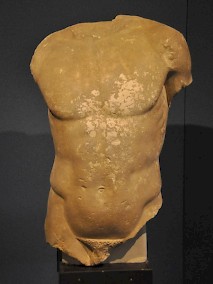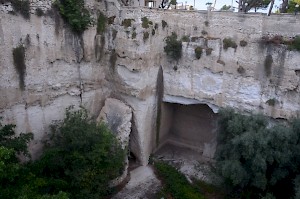History of Syracuse (2)
Q1954223Syracuse: the ancient capital of Sicily.
Democratic Intermezzo

In the seventh book of his Histories, which were composed in Athens in the 440s and 430s, the Greek researcher Herodotus offers a lengthy account of the power of Syracuse. This comes as no surprise. Athens started to show an interest in Sicily, which had, until then, been part of the Corinthian and Spartan "backyard". This was not the natural course of events. In 444, Athens had been invited to found a town named Thurii in southern Italy (Herodotus was one of the settlers), but Athens had made it into a "panhellenic" or all-Greek town to prevent a provocation of Corinth. However, in the late 430s, the Athenians allied themselves to Corcyra (Corfu), which gave them control of the Ionian Sea. This was one of the causes of the Archidamian War (431-421), in which many Italian and Sicilian towns supported Sparta and Corinth against Athens. Between 427 and 424, an Athenian navy showed itself in the west, and the Athenians allied themselves to the native population of Sicily.
However, the Sicilian cities were now aware of Athenian power, and during a conference at Gela, organized by the Syracusan democratic leader Hermocrates, they decided to make peace with one another and exclude the foreigners from the island. Almost immediately, an Athenian diplomat named Phaeax concluded alliances with Acragas, Camarina and the natives, because the conference at Gela had not taken away the mutual suspicion that was common among Greek cities.

In 421, Sparta and Athens concluded a peace treaty, and the Athenians, having their hands free, sent out an armada to conquer Sicily. Its commanders were Lamachus, Nicias, and Alcibiades. In 415, the ships arrived, but after initial successes, the recall of Alcibiades, the death of Lamachus, and the arrival of the Spartan military adviser Gylippus to help the Sicilians, it turned out that the Athenians were unable to capture Syracuse (413; more...). The expeditionary force was destroyed. This was more than just a military victory: it showed that the Syracusan democracy, which had seen heavy tensions, could be an effective system to govern the nation.
Syracuse sided with Sparta in the Decelean or Ionian War (413-404), which was to culminate in the fall of Athens and the dismantling of its empire. Hermocrates commanded a Syracusan contingent that fought in the Aegean waters, but in his absence, radical democrats seized power, and he learned that his return was no longer appreciated. At the same time, the town of Selinus saw its chance in its conflict with Segesta, a former ally of Athens. The Segestans were pushed back and invited the Carthaginians to come to their assistance. Immediately, the Syracusan democrats announced their support for Selinus.

In 408, a large Carthaginian army commanded by a man named Hannibal landed at Lilybaeum and captured Selinus. The repercussions in Syracuse were grave. There were fights between the moderate and radical democrats, and Hermocrates, who tried to obtain the right to return, was killed.
All this served to encourage the Carthaginians, and their general Himilco attacked Acragas, the main Sicilian city after Syracuse (406). After a protracted siege and the defeat of a Greek rescue army, the town was evacuated, and the invaders proceeded to Gela. To the Greeks, the situation was desperate, and in the first weeks of 405, the Syracusans started to look for new leaders. They appointed as strategos autokrator ("sole general with absolute powers") the man who was to lead them into the fourth century: Dionysius.